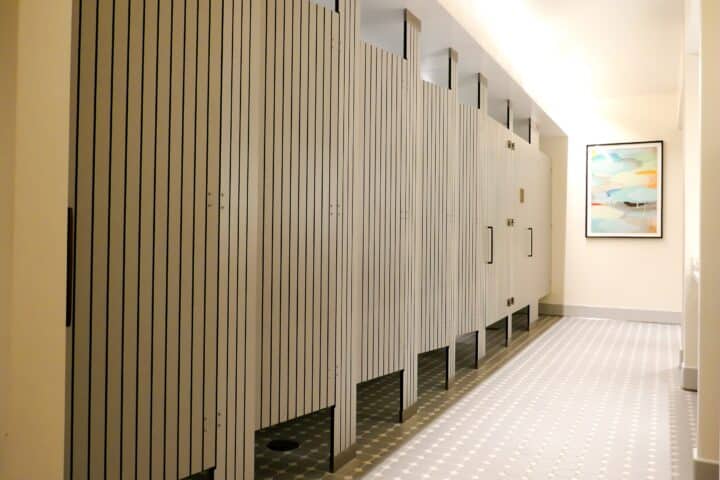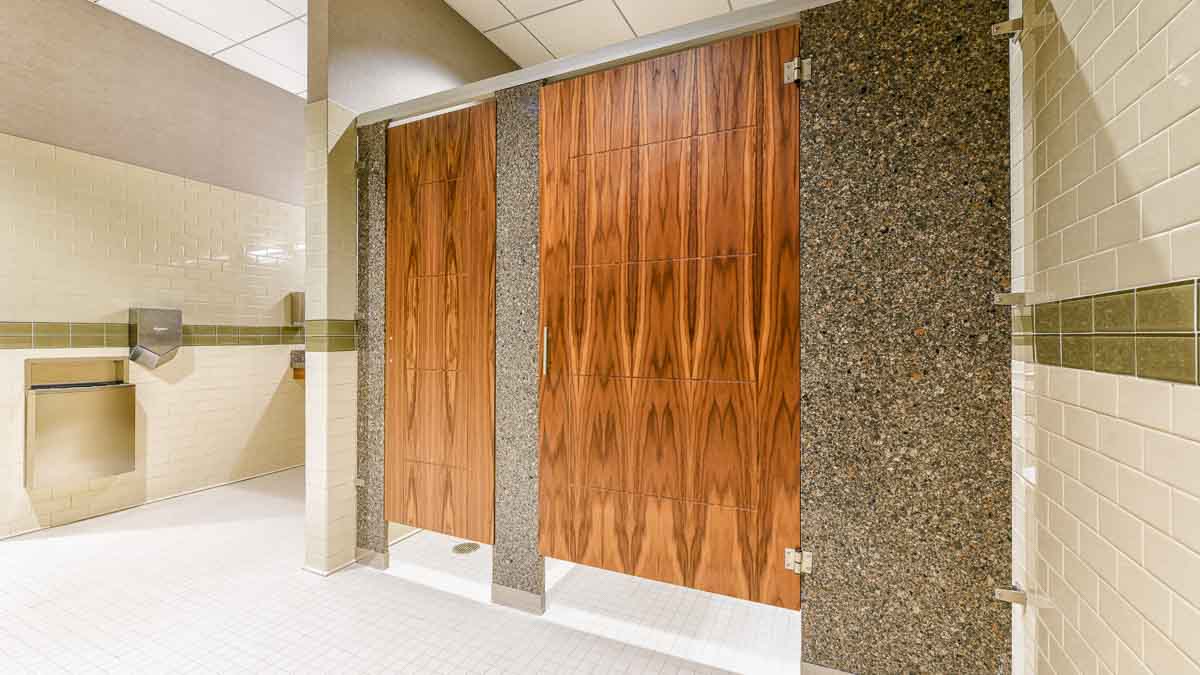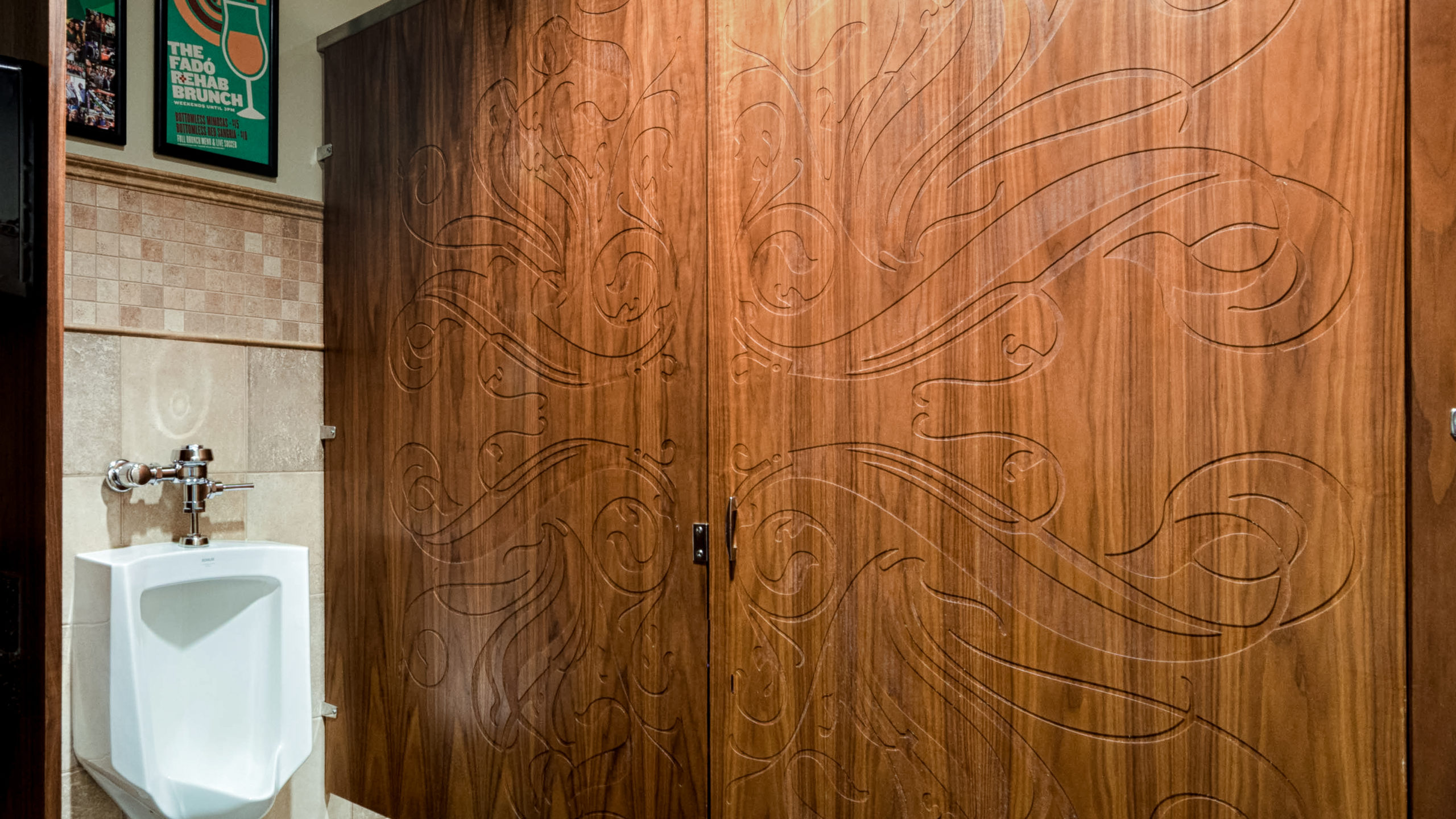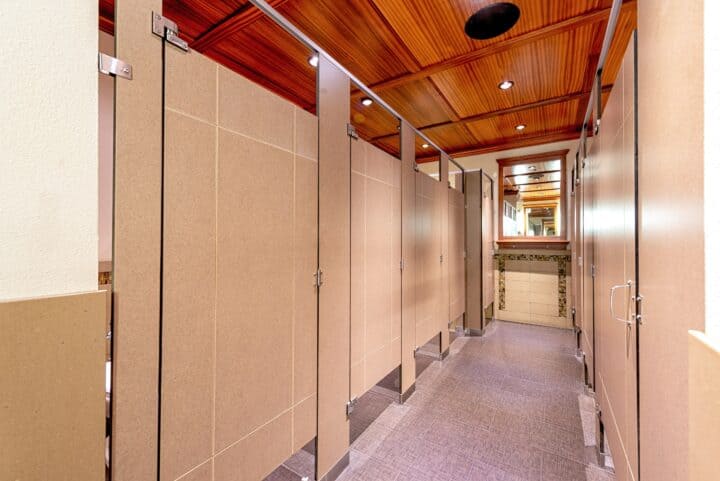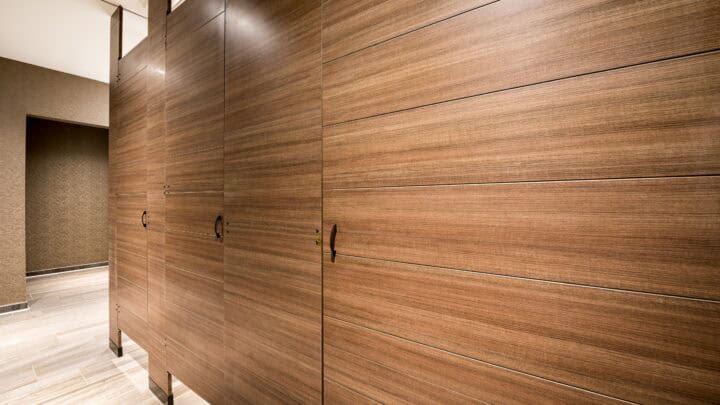Engraved Partitions
Design with Engraved PartitionsEngraved partition components combine design with functional durability, allowing patterns to be used to enhance restroom aesthetics.
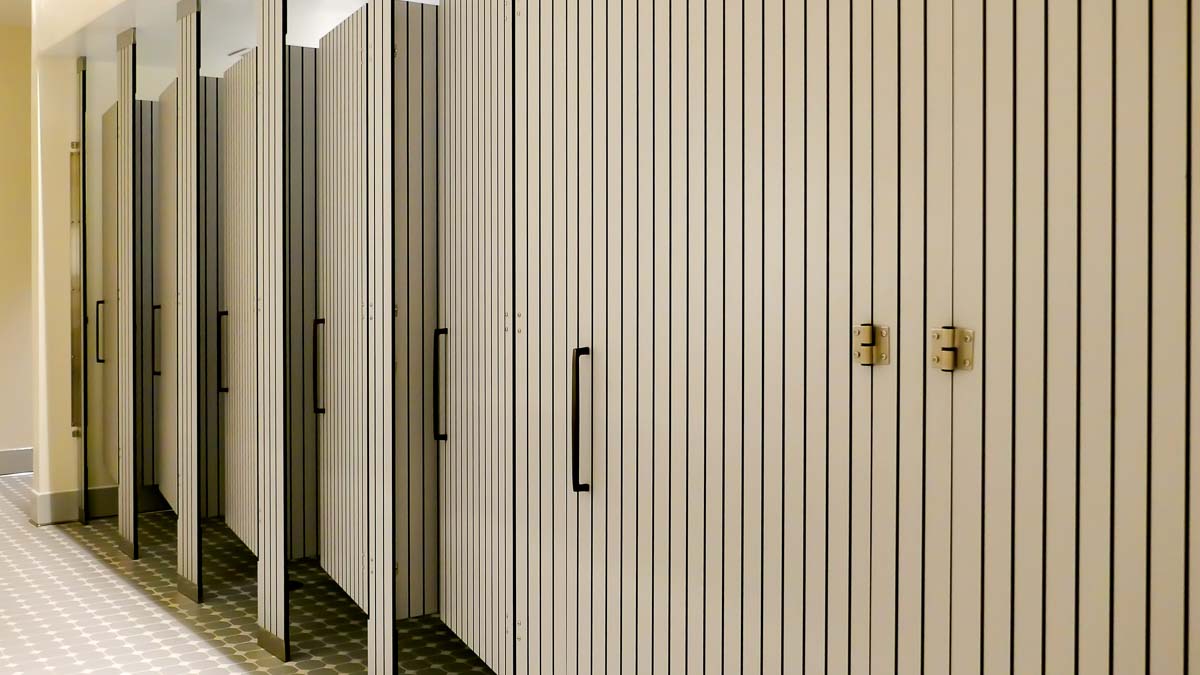
What are Engraved Components?
Engraved partition components feature precision-cut designs machined directly into the surface material. Patterns, drawings, logos, and text can all be engraved to add visual interest.
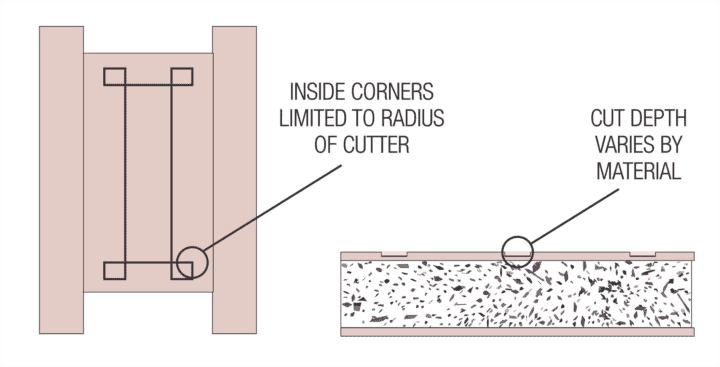
Compatible Materials
Materials
Engraved doors and other partition components are available in various high-quality materials, each offering unique benefits for different commercial restroom environments.
Compatible Mounting Styles
Mounting StylesEngraved components can be integrated with multiple mounting styles, providing flexibility in design and installation for diverse commercial restroom layouts.
Headrail Braced
Floor mounted pilasters with overhead aluminum bracing for stability.

Floor to Ceiling
Pilasters secured at the floor and ceiling with minimal visible hardware.
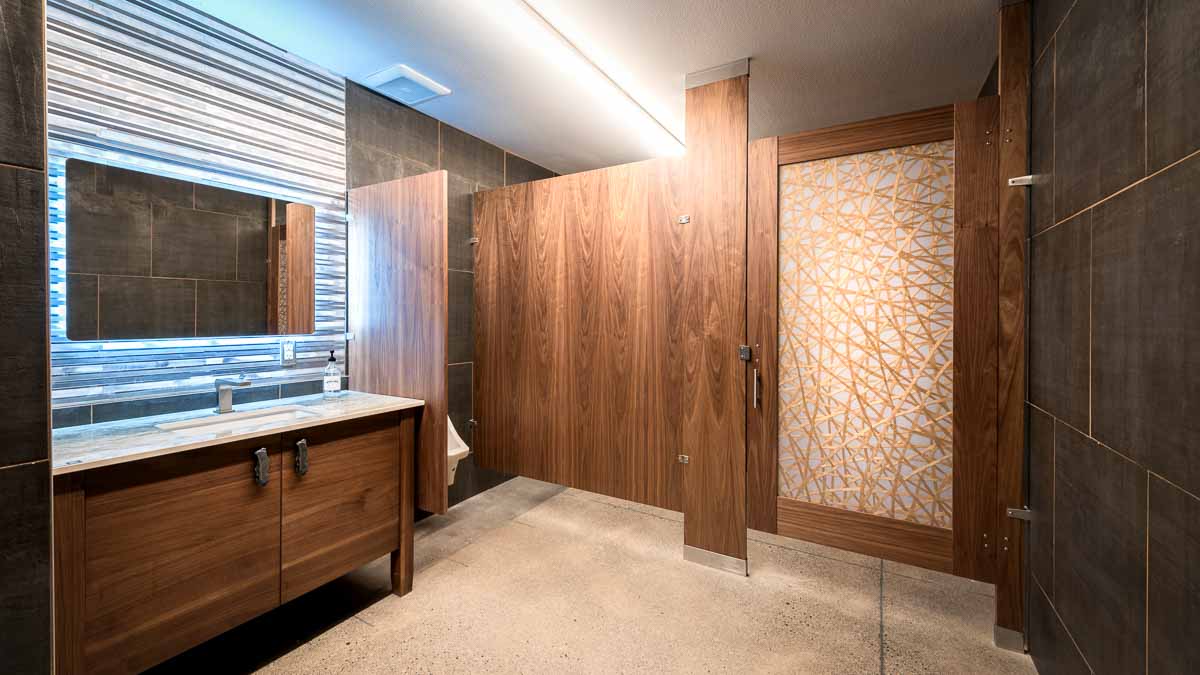
European
Pilasters with overhead headrail and floor pedestals blend style and strength.
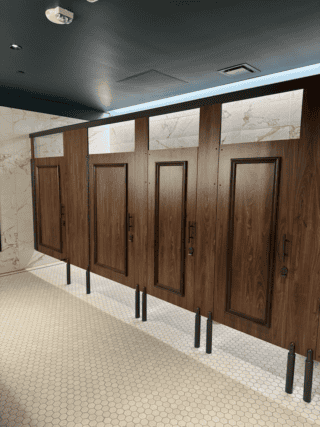
Ceiling Hung
Pilasters attached solely to the ceiling offer open floor space and a clean look.
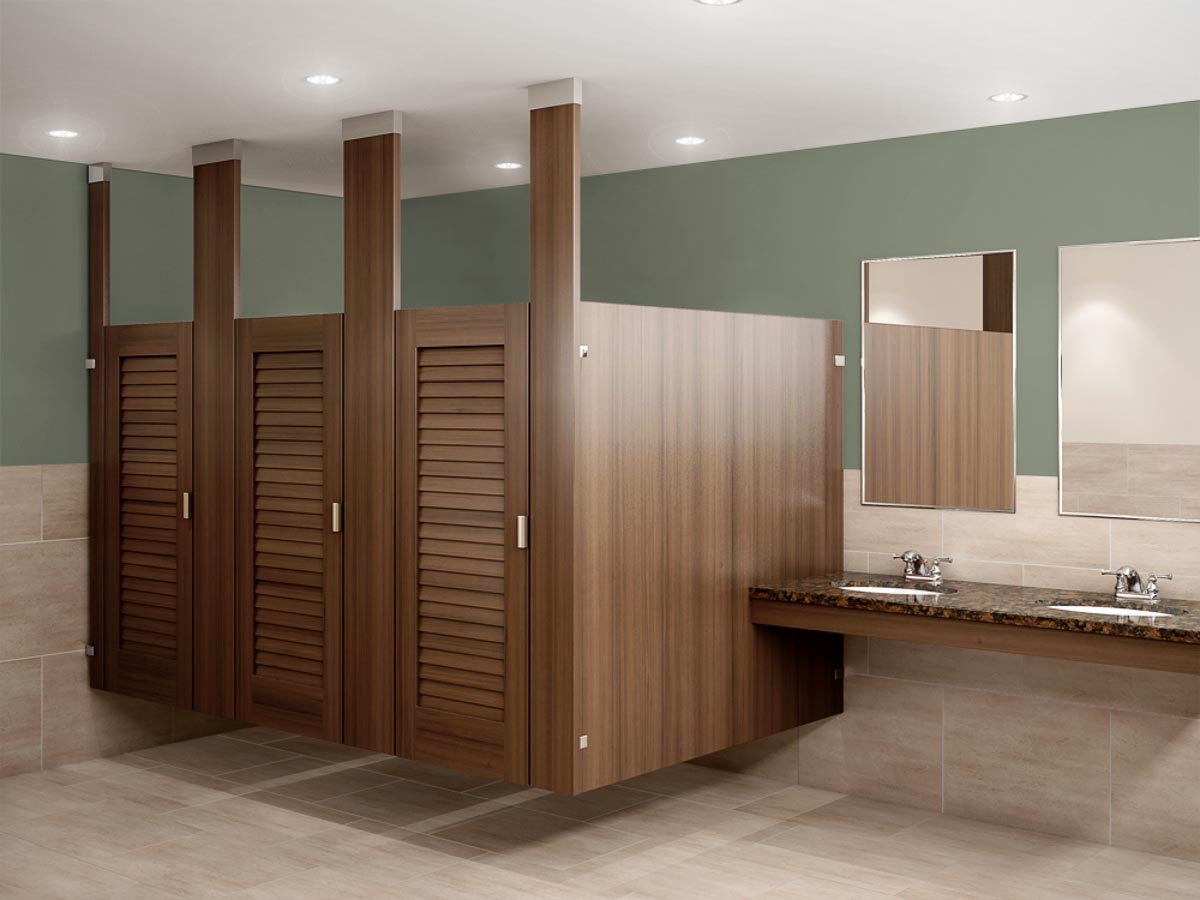
Floor Mount
Partition pilasters are anchored to the floor only, resulting in low-profile elegance.
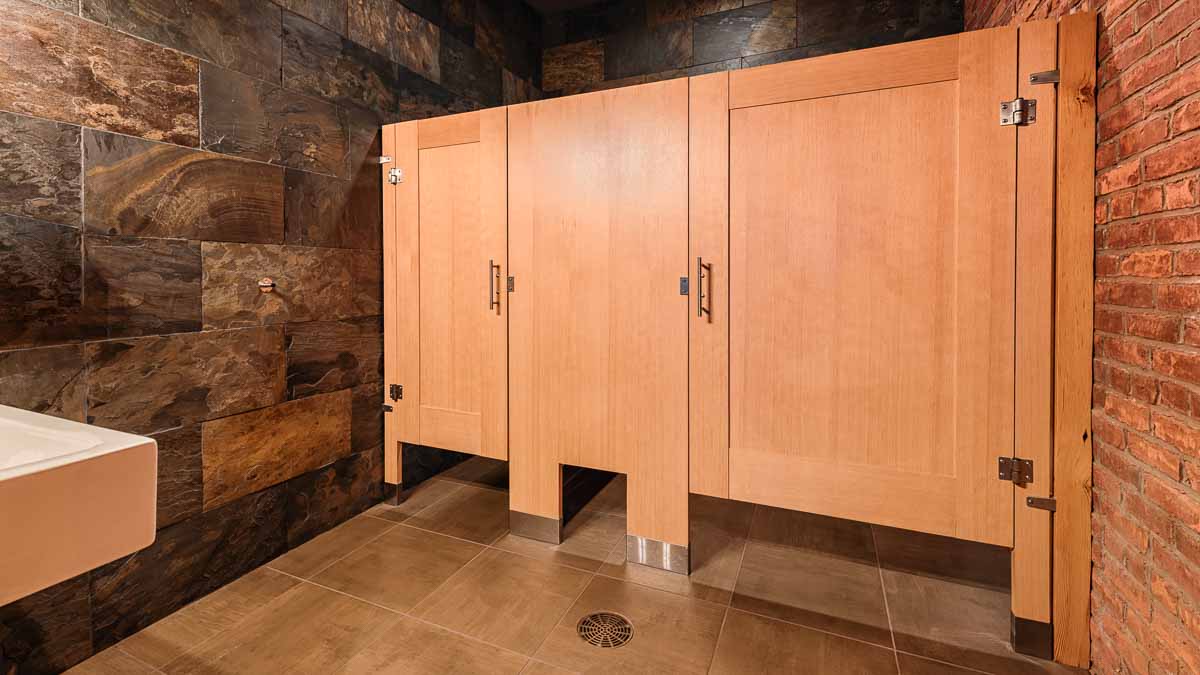
Considerations When Using Engraved Partition Components
Explore the key features and considerations of engraved components to determine their suitability for your commercial restroom project.
FeaturesDesigns
Create patterns, logos, or geometric designs on partition components to achieve unique architectural statements.
File Requirements
Submit designs in DXF or DWG formats for optimal results. Other formats can be used, but usually with additional fees for conversion work.
Maintenance Needs
Engraved components are sealed, but may require specific cleaning protocols based on the material and the design.
Impact on Lead Times
More intricate designs may extend production lead times due to additional CNC programming and setup.
Pattern-Specific Issues
Tooling patterns may be evident in large, “clear” areas of an engraving.
How to Specify Ironwood
Follow our easy three-step process to start using Engraving in your design:
The Process- 1
Go to the Configurator
The Ironwwood Configurator will help guide your choices of material, mounting style, door option, hardware, etc. to specify your toilet partitions.
- 2
Generate Your Specification
Once you have made your selections, the configurator will generate a spec and other helpful resources for you.
- 3
Contact Us With Any Questions
Call us at 360-965-6590 or email us at [email protected].
Deeper Dive & Resources
Discover detailed information about engraved components to make informed decisions for your commercial restroom design.
Some material-specific characteristics of engraving include:
- High Pressure Laminate: Exposes a dark brown core for most laminates (color through / color core is an exception)
- Compact Laminate: Reveals black core for most compact laminates (color through / color core is an exception)
- Wood Veneer: Can be single or double-layered for engraving depth variation
Ironwood offers a suite of standard engraving patterns. We can also manufacture engraved partitions with project-specific designs, providing flexibility depending on project needs.
Ironwood’s engraving patterns chart shows the available standard designs.
Engravings can be placed on both sides of doors or panels for a cohesive look.
Design file specification details include:
- Preferred Formats: DXF, DWG
- Accepted Formats: AI, CDR, GIF, JPEG (conversion fees apply)
- Inside corners are limited by tool-dependent minimum radii
- Avoid large clear areas to minimize visible tooling patterns
Frequently Asked Questions
What file format is best for custom engravings?
DXF and DWG formats are preferred, as they allow for smooth integration with our CNC programming. Other formats, like JPEG or AI, can be used but may incur additional conversion costs.
Can engraving be applied to both sides of a partition door?
Yes, engraving can be applied to both sides of doors, panels, and other components, creating a cohesive design.
Does engraving affect the partition’s durability?
No, engraving does not compromise the strength of the partition material. However, the level of detail may affect cleaning requirements.
How does the engraving process affect lead time?
Custom engravings, especially those in non-standard formats, may extend lead times due to additional programming and tooling requirements.
Can patterns be engraved across multiple partition components?
Yes, designs can continue across contiguous partition components for seamless visual flow across doors, pilasters, and panels.

If you can’t find the answer you’re looking for, feel free to reach out to us directly and we’ll be happy to assist you!
Featured Engraved Bathroom Stalls
GalleryBrowse through examples of engraved toilet partitions, highlighting their aesthetic appeal and practical benefits.
Explore Portfolio